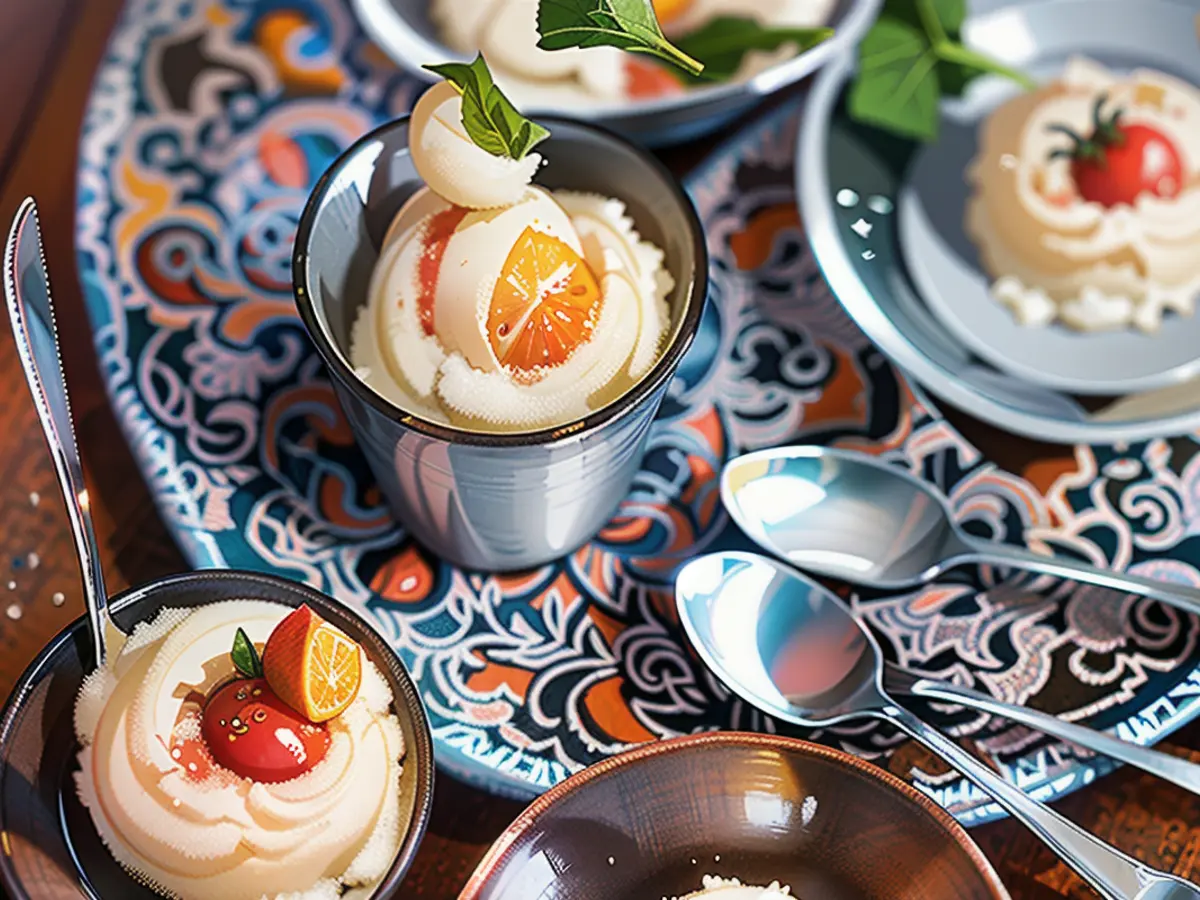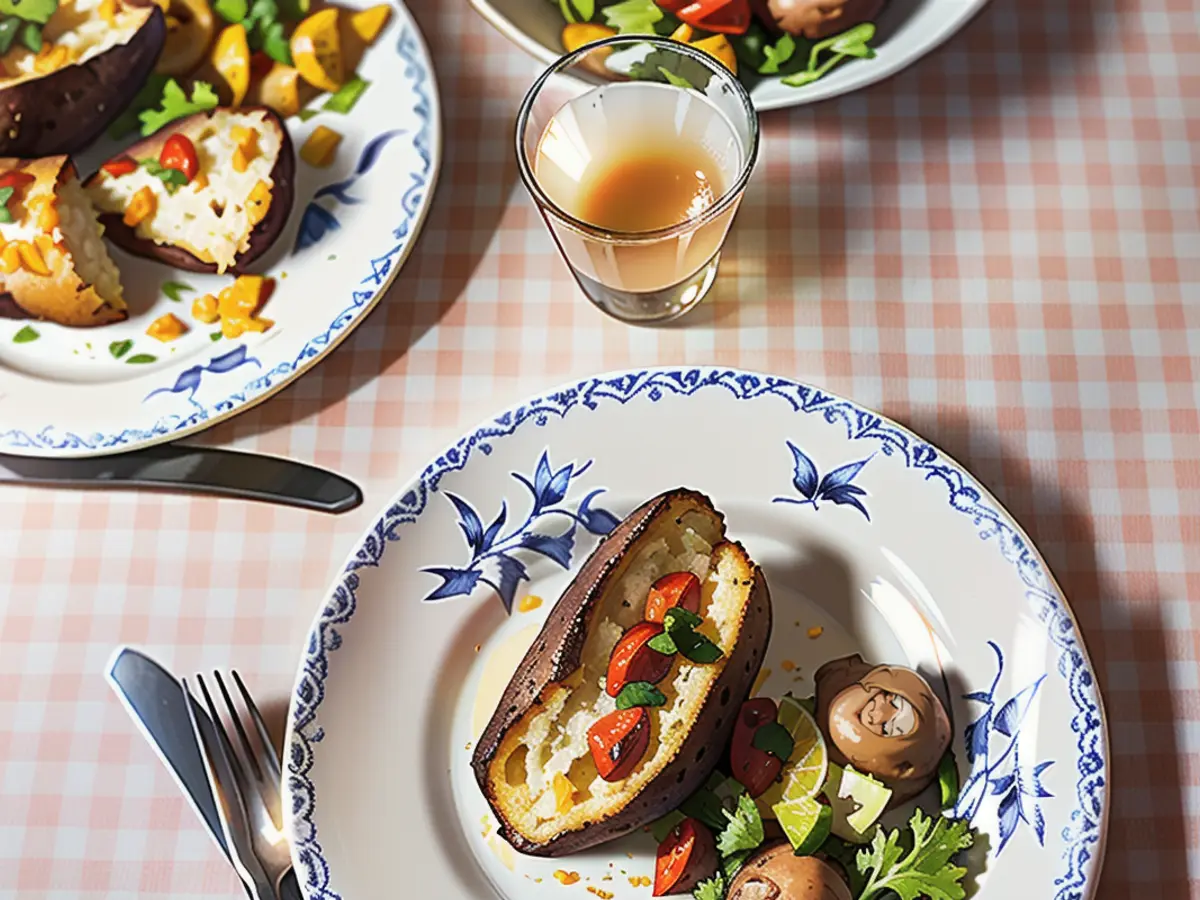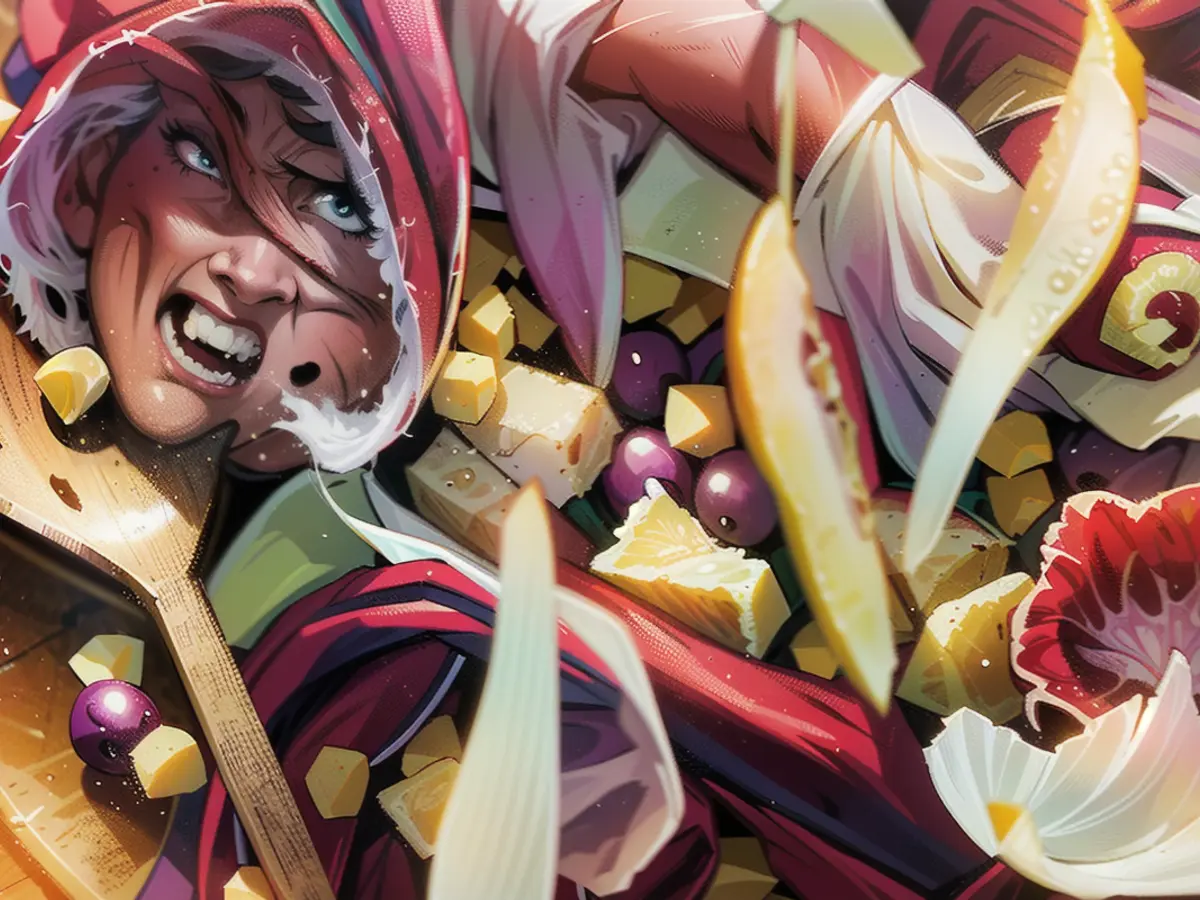Featuring Vegetables as the Main Course: A Guide
Italians are masters at making vegetables the star of a dish. In Italian recipes, vegetables are never bland and uninteresting, always well-seasoned and fragrant. Gennaro Contaldo, a renowned chef and mentor to Tim Mälzer and Jamie Oliver, is a master of this art.
Gennaro Contaldo was raised on the "cucina povera," Italy's so-called poor cuisine. Vegetables were the main focus of most meals, meat was only served on Sundays, and fish on Fridays. Meat was expensive, while vegetables were either inexpensive or even grew in your own garden, and fish was often caught by you. At the age of 75, Contaldo, a master chef from the Amalfi Coast, has a wealth of knowledge about vegetables. He worked in local restaurants from the age of 8 and moved to London when he was 20; he is now known as a mentor to Tim Mälzer and Jamie Oliver, a friendship that continues to this day.
In his seventh cookbook, Gennaro Contaldo showcases his love for vegetables in a price-conscious, seasonal, and creatively seasoned way. The title of this new book is "Gennaro's Verdure" and it features original Italian vegetable recipes published by ars vivendi.
This book is unique because it organizes recipes by color, with dishes featuring green, red, or purple vegetables. The variety of vegetables includes green asparagus and broccoli, red peppers and tomatoes, purple eggplants, and radicchio. A fourth chapter is dedicated to sun-colored vegetables with recipes ranging from cauliflower to pumpkin. As expected from ars vivendi, "Gennaro's Verdure" is also visually appealing and easy to read. The introductory knowledge pages for the individual vegetables are appropriately colored: green, red, sunny yellow, and purple. Browning through this book is a pleasure!
Vegetables are never mundane
As with all his wonderful cookbooks, Gennaro Contaldo shares his knowledge with us, gives us tips, and reveals his secrets. Everything is presented in a way that is suitable for everyday use and can be implemented immediately. There are a few pages of interesting facts about each vegetable, ranging from history, occurrence, and aroma to storage and preparation. Over 80 recipes in this book are accompanied by a short commentary from the author. Delicate creations like tomato sorbet or pea soufflés, as well as newly imagined classics like eggplant pizette and carbonara with green asparagus, can be prepared by any cooking enthusiast.
The recipes are simple yet clever - true to Italian style! Tasty tomatoes are loved by many and used in various dishes, but Gennaro Contaldo has surprises in store even for this "common" vegetable. He presents a recipe for tomato sorbet, a delightful treat in the summer heat, and a quick tomato sauce favorite that's on the table in just a few minutes.
Italian classics alternate with regional specialties, as the different climate zones in Italy provide an ideal environment for a variety of vegetables. From the cool Alpine regions to the warm Mediterranean coasts, many preferences and recipes have developed. The Italians transform "greens" into a vitamin-rich side dish and use the right spices and methods to bring out the best flavors in every leaf, fruit, and root.
"Vegetables are so much more than a simple side dish. In Italy, nobody just serves cooked vegetables - they are always seasoned or made into something special," writes Gennaro Contaldo. To maintain this tradition, the experienced chef transforms vegetables into salads, polpette, gnocchi, tarts, or soups, sometimes tenderly cooking them or making them fresh and crispy.
Every recipe is also a vegetarian success
Although this book is primarily about vegetables, it does not contain purely vegetarian recipes. This is because, as in the tradition of cucina povera, Contaldo often adds a few animal products such as pancetta and parmesan or anchovies. But fear not, as he has also considered vegetarians: "If you want, you can leave these ingredients out. I include suggestions with every recipe so that they can be adapted and made 100% vegetarian."
If, like me, you can't get enough of Italian cuisine, you'll also find delights in the predecessors of "Gennaro's Verdure." Gennaro Contaldo has already published "Passione," "Pronto!," "Pasta Mia!", "Pizza, Pane, Panettone," "Limoni", and "Cucina Povera" with ars vivendi.
The classic carbonara is known and loved all around. With fresh-tasting green asparagus, it's delightful. Even the hard ends of the asparagus can be used to infuse the pasta water. To make it vegetarian, just exclude the pancetta and use a cheese similar to pecorino. Don't throw away the egg whites - save them in the fridge and cook them into an omelette the following day.

Instruction:
Snip off the tough ends of the asparagus, cut the spears into small pieces, and set them aside. Boil salted water in a pot and add the asparagus stalks. As soon as the water is boiling, take out the asparagus tips. Add linguine and cook until al dente.
In the meantime, warm olive oil in a large pan on medium heat. Add the pancetta and sauté for 2-3 minutes until slightly browned. Add the chopped asparagus spears and tips and fry for another 3 minutes until the asparagus is cooked.
Whisk the egg yolk in a bowl, add a bit of pepper and grated pecorino.
Strain the linguine, keeping some of the cooking water; mix in with the pasta. Add a little hot pasta water to the dish for a creamy texture. Simmer briefly, then swiftly mix in the egg yolk mixture and stir until everything's evenly combined.
Season with pepper and extra pecorino; serve promptly.
Baked Stuffed Potatoes (Italian-Style)
If you lightly grease the potatoes with oil and salt before baking, the skin becomes deliciously crispy. Be careful not to damage the skin when removing the soft potato from them. Serve with a mixed salad for a scrumptious meal.
Preparation:
Preheat the oven to 200°C (fan)/220°C (top/bottom heat).
Wash and thoroughly dry the potatoes. Prick with a fork, then rub a little olive oil and salt all over them. Bake for 50-60 minutes or until they're cooked and the skin is crunchy.
Let the potatoes cool down, then cut them in half lengthwise. Scoop out the soft potato, leaving the skins intact, and place it in a bowl.

Mash the potato until smooth. Mix in the sundried tomatoes, salami, and soft cheese. Season with salt and pepper. Stuff the potato skins with the mixture and sprinkle with Parmesan cheese.
Coat a baking tray with oil before placing the stuffed potato halves on it. Bake for 10-15 minutes or until they're golden. Savor your meal!
Tomato Sorbet
When there are loads of scrumptious tomatoes during the late summer season, you'll love this sorbet. It can be served as a refreshing appetizer with mozzarella sticks, after a meal, or even in-between courses. The light chili taste gives it a kick, and tomato and basil combine marvelously.
Cooking:
Put a clean, empty container in the freezer (if you don't have an ice cream maker).
Carefully score a cross on the underside of the tomatoes. Lower the tomatoes into boiling water for about 1 minute, then drain. Peel the skins off.
Slice the tomatoes in half and remove the seeds using a teaspoon. Gather the juice beneath a sieve and discard the seeds.
Puree the tomatoes, their juice, lemon juice, sugar, chili rings, and basil leaves in a blender until smooth.
For an ice cream maker, pour the mixture in and turn on the machine. Otherwise, pour the mixture into the cold container, cover, and freeze for 30 minutes. Give it a stir, then freeze again for around 3-4 hours until it resembles sorbet.
Let the sorbet sit at room temperature for 5 minutes before serving. Use an ice cream scoop to divide it among bowls.
Enjoy your meal, and Happy Cooking by Heidi Driesner!

Read also:
- Floods: water levels remain critical in many places
- Snow chaos further restricts Bavaria
- Continuous operation in the flood areas
- Flood situation remains tense in many places
Source: www.ntv.de








